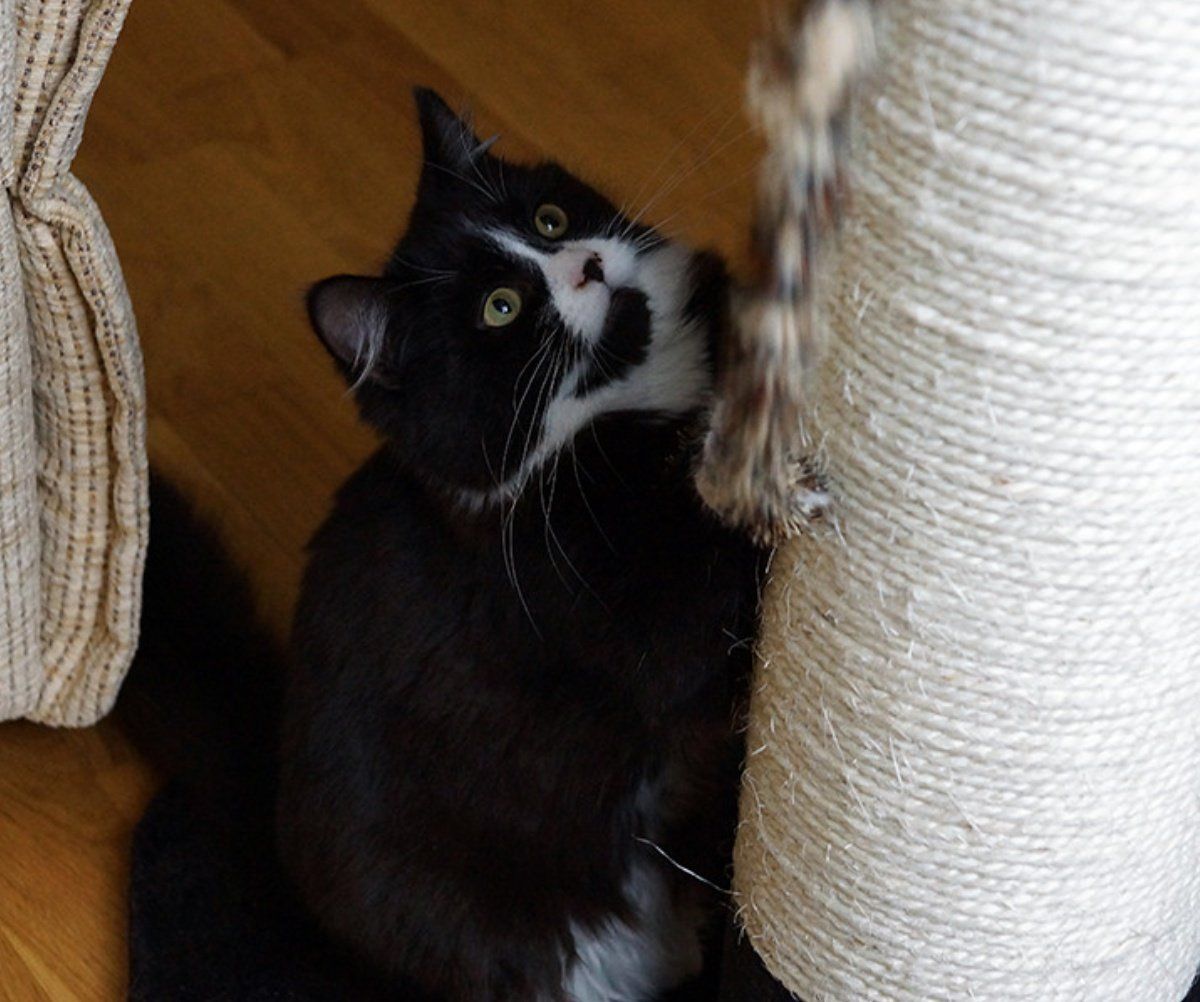Teach Your Cat to Use a Scratching Post
How to get your cat to stop scratching your furniture
Cats scratch on things for two reasons - to shed their claws and to mark their territory. To save your furniture from damage you should provide your cat with a scratching post or two and teach him/her how to use it. The requirements for a good scratching post are:
- Vertical posts must be sturdy and tall enough for the cat to stretch its body. Some cats prefer horizontal marking posts. Try both types to find out what your cat prefers, or offer one of each.
- The posts should be located in prominent areas in your home, not in the basement. Cats often scratch when they wake up from a nap so put one near the cat’s sleeping area.
You can buy ready-made scratching posts at the pet store or you can make your own. Some cats prefer a simple log. For others, a piece of corrugated cardboard mounted on a piece of wood works just fine. Although most pre-made posts are covered with carpet, this may not be the best material to use. Cats can get their claws stuck in the fabric loops and stop using the post as a result. Try attaching the carpet upside down or using other materials like upholstery fabric or sisal rope.
Attract your cat to the post using catnip. Sprinkle the catnip on the base and into the fabric or hang bags of catnip from the top. Spend time near the post encouraging your cat to interact with it. Play with the cat near the post and incorporate it into your play.
The most important step is to reward the cat every time he/she uses the post. Have yummy food treats nearby and give one to the cat whenever you see him/her scratching the post.
Once your cat is using the scratching post you have provided you can teach him/her that other items are off limits.
- Texture Aversion - aluminum foil, double-sided tape or clear packing tape can be placed on the furniture - cats don’t like to scratch these surfaces
- Smell Aversion - citronella, perfumes, citrus, menthol, eucalyptus oil, and oil of wintergreen are all aversive smells to cats. Soak pieces of cloth or cotton balls in these smelly substances and hang them on the furniture.
- Sound Aversion: A strategically placed motion detector alarm will keep most cats from getting near the furniture that is off limits for scratching.











